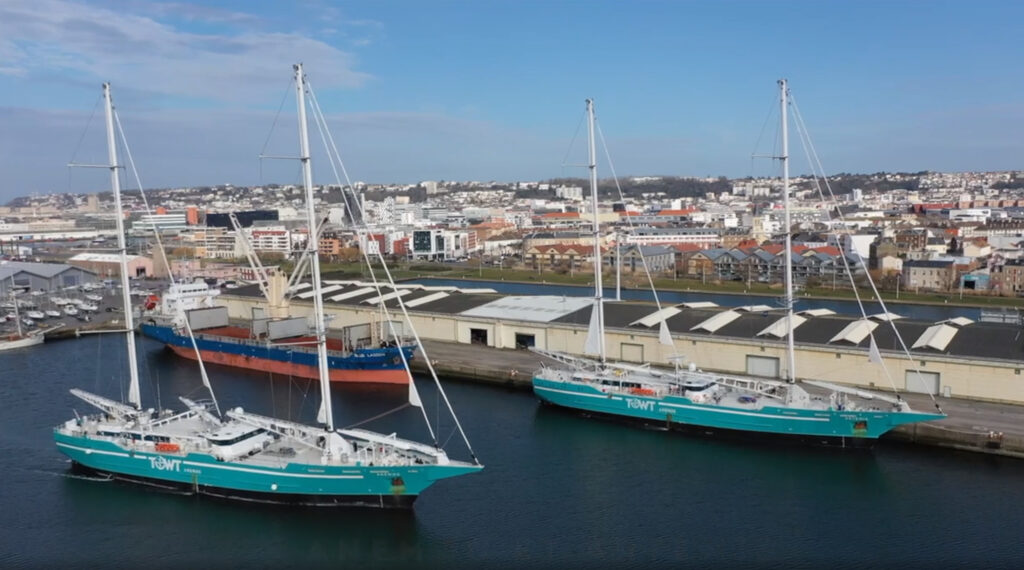Emissions solution with nod to the past
Today’s wind-powered vessels are fast, slick and brimming with technology, and are nothing like their historic predecessors. At the Wind for Goods fair in Nice, they were presented.
It is strange to talk about sailing ships as if they were a new invention, but if you compare modern ships with their ancient predecessors, the fact that they are powered by wind is the only thing they still have in common.
The ancient Greek triremes were known as the Spitfires of their time and made a name for themselves in the Peloponnesian War. The British Cutty Sark was praised for its speed in transporting tea from India, but these ships look nothing like the ones on display at the Wind For Goods event in St Nazaire, France last week.
In the three years since the biennial fair, first held in 2020, promoted modern wind energy technology, the exhibition, though still small, has been growing. The venue, a former World War II submarine base just downstream from the Chantier de l’Atlantic shipyard, is in the middle of a maritime cluster.
The shipyard, which can be seen from the fair’s outdoor area, has the world’s largest sailing passenger ship moored on the Loire, awaiting the arrival of masts and sails. Three sturdy sails made of glass and polyester will be mounted on the upper deck of the 220-metre-long ship, which can accommodate 110 passengers.
The commercial speed of the Neoliner will be 11 knots, but the company admits there will be seasonal variations in performance. That said, a second ship is expected to be ordered once the project has proven itself.
Lack of investment
Ingenuity is not necessarily the exclusive domain of engineers. Célia Agostini, director of project finance company Cleantech for France, lamented the lack of investment in the period after innovation and development of a concept.
She cited the example of a failed battery plant in Sweden, where 16 billion euros was invested until production could be scaled up, but the plant itself could not count on the kind of support that the US and China provide in the form of state aid to scale up production of innovations, Agostini said, while “Europe is risk-averse”.
Agostini offers two solutions in the form of innovative financing: “If you offer investors guarantees for 50% of the project, the risk is lower if the project fails and you attract more investors.”
That should be accompanied by a solution that creates local demand for a product by using public money to guarantee sales.
“That way, you don’t pay upfront costs for the guarantees, but you also generate demand by integrating demand into the guarantees,” Agostini explains.
TOWT
Financing has not been a problem for Towt, whose president and CEO Guillame Le Grand advertises its soft-sail sailing yachts, the Phoenix class, two of which are now in operation. These ships sail the Atlantic and carry more than 1,000 tonnes of pharmaceuticals, brandy, rum, food, textiles, coffee, cocoa and cosmetics, among others.
Customers receive an Anemos certificate with information on CO2 saved and details of the ship’s journey, Le Grand said.
Anemos and Artemis, the first two ships in the fleet, were built at French yard Piriou, Romanian yard Giurgiu and Piriou Vietnam, both with 443 kW Cummins generators for auxiliary power with variable propeller steps, but Le Grand insists that the main power source remains the sail.
There are six more Phoenix-class ships under construction: “Three are being built in Da Nang and three in Vung Tau, all supervised by Piriou, with about a quarter share from France/EU,” Le Grand said.
Le Grand intriguingly hints at what Towt still has in store: “Given the commercial success, we are first planning to re-order this Phoenix class and we are designing different ships [dry/container/ro-ro/container/tanker] with revolutionary rigging, but I cannot say more at the moment.”
Wind for Goods shows that there is life in modernised technology and that a solution to the carbon problem in shipping is blowing in the wind.
Source: Nick Savvides on SeaTrade Maritime News.
Image: TOWT


